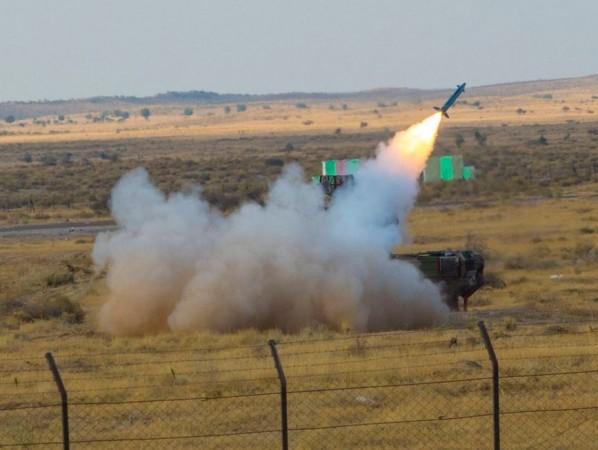
Though the Indian Air Force's (IAF) recent Exercise Iron Fist 2016 March 18 was successful, there were some missiles that did not turn up at the intended targets and this was embarrassing for the IAF, given the fact that it was not only witnessed by the country's commander-in-chief but also by the general public live via national TV.
But the fact that the IAF has been open about it and is ready to talk about shows the transparency in its working style.
The recent event saw the participation of over 180 aircraft in the IAF's inventory. Several aircraft came from bases around the country to the Air Force Firing Range, Pokhran, in Rajasthan's Thar desert.
The IAF paraded its aircraft from the vintage "Tigermoth" to its frontline air-superiority fighter, Su-30 MKI, to the indigenous multi-role fighter aircraft, LCA Tejas. There were also several firsts in the exercise that the public saw, like the firing of the Astra beyond-visual-range air-to-air missiles (BVRAAMs), the Akash missile system and more.
Nevertheless, the IAF promised a "critical evaluation" of the missiles that failed to hit the designated targets, the Hindustan Times reported, citing a top officer familiar with the combat drills.
During the second segment of the Exercise Iron Fist 2016, where the IAF undertook night operations, a Mirage 2000 dropped U.S.-made Paveway laser-guided bomb (LGB), but the bomb did not hit its designated target.
Viewers also wondered what happened to the Soviet-origin OSA AK-M surface-to-air missile system, which, when launched, failed to hit an incoming hostile threat, which was simulated for the exercise.
"One of the two missiles could not engage its target. It appears the fuse did not function as the missile may not have been close to the target," the officer told the HT.
Another statement by the IAF spokesperson Wing Commander Rochelle D'Silva clarified that the weapons had performed as expected. In an combat event, the IAF increase the assault platforms based on the nature of threat, she told the HT.
But on the brighter side, most of the missiles and bombs released by the well-trained and professional IAF had hit their targets. Like the LCA Tejas that hit bang on the target when it fired LGB and R-73E air-to-air-missiles, or the Sukhoi-30 dropping high-speed low-drag bombs on "enemy" runway and firing Griffin LGB to hit a simulated "bridge" and rendering it ineffective for any "enemy" aircraft take offs.
The exercise proved that the IAF can conduct operations that are network-centric and in all-weather conditions. It also showed that it is ready to deal with any sort of eventuality from natural calamities to enemy threats.

















